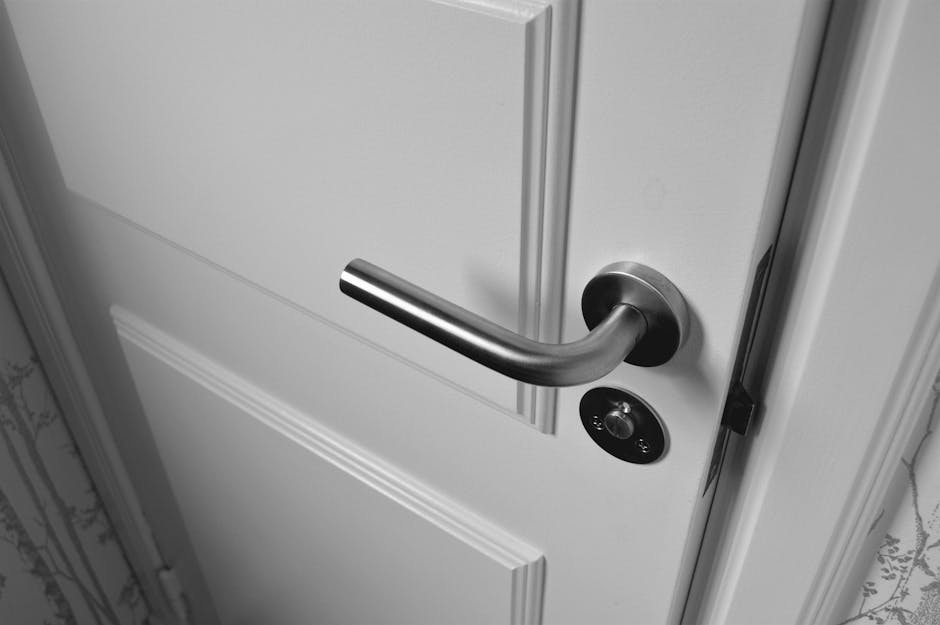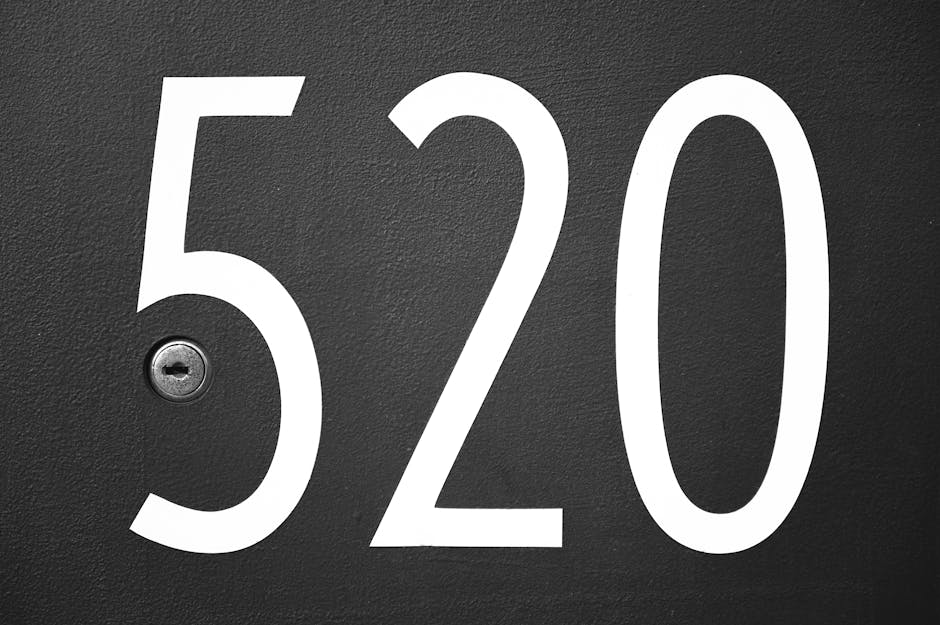Introduction to Home Security Systems and Their Importance
Home security systems play a crucial role in safeguarding both property and individuals. As a primary defense mechanism against unauthorized entry and criminal activity, these systems provide an invaluable sense of security and peace of mind. Over time, home security technologies have evolved, adapting to the changing needs and requirements of homeowners.
Initially, home security systems comprised basic components such as alarms and basic surveillance cameras. However, with the advancement in technology, modern systems now offer sophisticated features like smart sensors, remote monitoring, and integration with other home automation devices. This transition highlights the importance of staying abreast with the latest developments to ensure the highest level of protection.
According to data from the Bureau of Justice Statistics, properties equipped with security systems are significantly less likely to be targeted by burglars compared to those without. This underscores the effectiveness of having a reliable home security system. Furthermore, these systems not only protect against theft but also provide monitoring for fire, carbon monoxide, and other potential hazards.
Investing in a quality home security system can yield long-term benefits. These advantages include potential reductions in homeowners insurance premiums, improved real estate values, and enhanced personal safety. While the initial cost may be a consideration, the overall impact on a household’s safety and financial well-being generally justifies the investment.
In conclusion, the importance of a robust home security system cannot be overstated. As threats to home security continue to evolve, it is imperative for homeowners to periodically assess and upgrade their systems to maintain a high standard of safety and protection.
Increasing Crime Rates in Your Area
If there has been an observed increase in crime rates in your area, it is a significant indicator that it may be time to enhance your home security system. According to the Federal Bureau of Investigation (FBI) Uniform Crime Reporting (UCR) Program, property crimes, including burglaries, often escalate in certain neighborhoods due to various socio-economic factors.
One critical factor to consider is the crime statistics specific to your region. Government and law enforcement websites frequently update these statistics, allowing homeowners to stay informed. If data shows a rising trend in burglaries, thefts, or vandalism, it signals a heightened risk for your property.
Enhanced home security systems can provide a robust deterrent against criminal activities. Studies have shown that homes without security systems are up to 300% more likely to be targeted by burglars. This data suggests that a visible and modern security system can significantly reduce the chances of a break-in.
Consider local news and neighborhood watch reports as additional sources of information. Community forums and social media groups can also provide real-time alerts about suspicious activities or recent crime incidents in your vicinity.
Insurance companies often respond to elevated crime rates by increasing premiums. Demonstrating that you have an up-to-date and effective home security system in place can potentially lower these costs. This makes upgrading your security both a proactive and a financially prudent decision.
In conclusion, staying informed about the crime rates in your area and responding with improved security measures is crucial for safeguarding your home. Monitoring and acting upon these indicators can significantly enhance your safety and peace of mind.
Frequent Technological Advancements in Home Security
Keeping up with frequent technological advancements in home security is crucial for ensuring the safety and protection of your property. Rapid progress in technology has led to significant improvements in the effectiveness and functionality of modern security systems. Here are some key points to consider when evaluating whether it’s time to upgrade.
Enhanced Detection Capabilities
Modern security systems now come equipped with advanced sensors and detection technologies. These include motion sensors, glass break detectors, and advanced video surveillance features. These innovations provide more comprehensive monitoring and can detect potential security threats more efficiently.
Integration with Smart Home Devices
Current home security systems offer seamless integration with various smart home devices. This integration allows homeowners to control and monitor their security system using smartphones, tablets, and other connected devices, providing convenience and real-time updates from anywhere.
Improved User Interfaces
Newer systems feature user-friendly interfaces that make it easier for homeowners to arm, disarm, and manage their security settings. Touchscreen panels and intuitive mobile apps ensure that users can operate their security systems with minimal difficulty.
Enhanced Data Encryption
Security systems now incorporate advanced data encryption protocols to protect against cyber threats. Ensuring that communication between devices and monitoring centers is encrypted helps safeguard against hacking and unauthorized access.
AI and Machine Learning
Artificial intelligence and machine learning algorithms have been integrated into modern home security systems, enhancing their ability to identify and respond to security breaches. These systems can learn from past events to improve accuracy and reduce the likelihood of false alarms.
Regular Software Updates
Many new security systems offer regular software updates that improve functionality and security features over time. This ensures that the system remains effective in the face of evolving security threats and technological advancements.
- Enhanced detection capabilities
- Integration with smart home devices
- Improved user interfaces
- Enhanced data encryption
- AI and machine learning integration
- Regular software updates
Given these significant advancements, assessing the capabilities of your current home security system against these technological improvements can help determine if an upgrade is warranted.
Signs of Tampering or Breaches in Your Current System
Signs of Tampering or Breaches in Your Current System
Identifying signs of tampering or breaches in your home security system is crucial for maintaining the safety and integrity of your property. There are several indicators to be aware of that suggest your system may have been compromised.
Unexplained Damage: Physical damage to your security devices can be a clear sign of tampering. Look for broken camera lenses, cut wires, or damaged control panels. These damages might indicate that someone has attempted to disable your security features.
Frequent False Alarms: While occasional false alarms can occur, a sudden increase can be an indication that your system is being tampered with. Intruders sometimes trigger false alarms to test security responses or prompt owners to disable the system temporarily.
Unfamiliar Devices on Your Network: Modern security systems often integrate with your home network. Regularly check for unfamiliar devices connected to your network. Unauthorized access can signal that someone is attempting to interfere with your security setup.
Pay attention to the following specific signs that indicate possible tampering or breaches:
- Strange Behavior from Devices: Cameras that pan or tilt without user input, security lights flickering or turning off unexpectedly, or unexplained beeps from your control panel.
- Unscheduled or Repeated Activity Logs: Unusual or repeated entries in your system’s activity logs, such as door sensors activating without a clear reason.
- Changes in System Settings: Unauthorized changes to the system configuration, passwords, or user credentials.
The table below highlights common signs of tampering along with their possible causes:
| Sign of Tampering | Possible Cause |
|---|---|
| Cameras out of position | Attempt to disable visual surveillance |
| Disconnected or cut wires | Sabotage to disable system components |
| Unusual network devices | Unauthorized access to the security network |
| Repeated false alarms | Testing of security response or system instability |
Regular checks and maintenance of your home security system are essential to ensure its effectiveness. Keep your system’s firmware and software up to date, and consider periodic professional inspections to identify and rectify any vulnerabilities. If you notice any signs of tampering, it may be time to consider upgrading to a more robust and secure system.
Limitations and Drawbacks of Outdated Security Systems
Outdated security systems can pose several limitations and drawbacks that compromise the safety and security of your home. As technology evolves, older systems struggle to keep up with the advanced methods used by intruders. Here we outline key limitations and drawbacks of outdated security systems:
Lack of Integration Capabilities
Older security systems often lack the ability to integrate with modern smart home devices. Current systems can seamlessly connect with smart locks, lights, and cameras, providing a more comprehensive security solution. A lack of integration can leave gaps in your home’s overall security setup.
Inadequate Detection Technology
Many outdated systems use basic motion detectors that are easily circumvented by intruders. Modern systems employ advanced detection technologies such as infrared sensors, video analytics, and even artificial intelligence to offer more reliable and comprehensive detection capabilities.
Poor Remote Access and Monitoring
Older systems typically do not support remote access and monitoring. With modern security systems, homeowners can monitor their property in real-time from anywhere via smartphones or tablets. This remote accessibility provides peace of mind and ensures prompt action in case of an emergency.
Limited Alarm Mechanisms
Traditional alarm systems often rely on loud sirens to deter intruders. While these can be effective, modern systems offer additional options such as silent alarms that alert the authorities without notifying the intruder. Enhanced alarm mechanisms can provide more layers of security and quicker response times.
Higher Risk of False Alarms
Older security systems are prone to false alarms due to outdated detection technologies. False alarms can lead to complacency and reduced effectiveness of security measures. Advanced systems feature improved algorithms and sensors, significantly minimizing the occurrence of false alarms.
Maintenance and Obsolescence Issues
Outdated security systems often face higher maintenance requirements and parts obsolescence. As manufacturers move on to new technologies, they may stop supporting older models, making it difficult or expensive to maintain an effective security system.
Acknowledging these limitations and drawbacks is essential for homeowners who wish to maintain a secure and technologically up-to-date home. Evaluating the effectiveness of your existing system and staying informed about advancements in home security technology can help you make the decision to upgrade at the right time.
Enhanced Features of Modern Home Security Solutions
Modern home security solutions come equipped with a variety of enhanced features that significantly improve the safety and convenience of your living environment. These advancements leverage cutting-edge technology to provide a more comprehensive and reliable security framework.
1. Smart Home Integration: Modern systems often integrate seamlessly with other smart home devices such as lights, thermostats, and door locks. This integration allows for automated settings and remote control via smartphone apps.
- Control systems remotely via dedicated apps
- Automate lights and locks for enhanced security
- Receive instant notifications of any anomalies
2. Improved Surveillance Capabilities: Advancements in camera technology now offer high-definition video, night vision, and wide-angle lenses that cover more area with better clarity.
- High-definition video quality
- Night vision for low-light conditions
- Wide-angle lenses for broader coverage
3. Enhanced Motion Detection: Modern systems are equipped with sensors that can differentiate between humans, animals, and other moving objects, reducing the number of false alarms.
- Accurate human detection
- Reduced false alarms
- Custom sensitivity settings
4. Cybersecurity Measures: With the increase in smart home device usage, cybersecurity has become a crucial component. Modern systems come with encrypted communication to protect against hacking.
- Encrypted data transmission
- Two-factor authentication
- Regular software updates
5. Advanced Alarm Systems: Current alarm systems integrate features like voice control and automated emergency contact alerts, making responses quicker and more efficient.
- Voice-activated control
- Automated emergency alerts
- Integration with local authorities
The following table provides a comparison of a few advanced features available in modern home security systems:
| Feature | Description |
|---|---|
| Smart Home Integration | Automates and remotely controls lights, door locks, and other devices |
| Night Vision Cameras | Provides clear video footage even in low-light conditions |
| Human Detection | Differentiates between humans and other moving objects |
| Two-Factor Authentication | Enhanced login security with an additional layer of verification |
By leveraging these enhanced features, modern home security solutions offer a significant upgrade over older systems, providing peace of mind and greater control over your home’s safety.
Cost-Benefit Analysis of Upgrading Your Home Security System
When considering an upgrade to your home security system, it’s vital to perform a cost-benefit analysis. This approach helps in determining whether the investment is worthwhile compared to continuing with an existing, possibly outdated, system.
Initial Costs vs. Long-Term Savings
An upgraded home security system often involves initial expenses such as purchasing new equipment and installation fees. However, it can lead to significant long-term savings. Modern systems can improve energy efficiency, reduce insurance premiums, and minimize the potential costs related to burglaries and vandalism.
- Initial Costs: Costs can include new hardware, professional installation, and potentially higher monthly monitoring fees.
- Long-Term Savings: Upgraded systems can decrease energy bills, insurance premiums, and financial losses from theft or damage.
Cost-Benefit Comparison Table
| Aspect | Details |
|---|---|
| Initial Costs | Hardware, Installation, Higher Monitoring Fees |
| Long-Term Savings | Energy Efficiency, Lower Insurance Premiums, Reduced Theft and Damage Costs |
Improved Security Levels
Modern home security systems provide advanced features such as real-time monitoring, smart home integration, and enhanced intrusion detection. These features can significantly improve the overall security of your home compared to older systems.
- Real-Time Monitoring: Allows for immediate alerts and quicker response times.
- Smart Home Integration: Compatibility with other smart devices for seamless automation.
- Enhanced Intrusion Detection: Use of cutting-edge technology such as AI and machine learning to detect potential threats.
Insurance Benefits
Insurance companies often provide discounts for homes equipped with advanced security systems. These discounts can offset some of the costs of upgrading, leading to additional savings over time.
- Potential reduction in home insurance premiums.
- Enhanced protection can lower the risk profile of your home.
Conclusion
Upgrading your home security system involves both costs and benefits. Performing a thorough cost-benefit analysis can elucidate the long-term advantages of enhanced security, energy savings, and potential insurance discounts, ultimately aiding in an informed decision-making process.
Steps to Take When Upgrading Your Home Security System
When you’ve determined that it’s time to upgrade your home security system, it’s essential to follow a systematic approach to ensure a smooth transition and optimal results. Here are the steps to take when upgrading your home security system:
1. Assess Your Current Security Needs:
Begin by evaluating your current security setup and identifying areas that need improvement. Consider factors such as the size of your property, vulnerable entry points, and any previous security breaches. Understanding your specific needs will help in choosing the right system.
2. Research Advanced Security Solutions:
Look into modern security options available in the market. This includes smart home integration, advanced surveillance cameras, motion detectors, and access control systems. Research products from reputable manufacturers and read reviews from other users to gauge reliability and effectiveness.
3. Consult with Security Experts:
Reach out to professional security consultants or companies specializing in home security. They can provide personalized recommendations based on an in-depth assessment of your property, current security measures, and your particular needs.
4. Plan Your Budget:
Determine a budget for your security upgrade. Costs can vary widely depending on the complexity of the system and the features you choose. Factor in both initial installation costs and any recurring fees for monitoring services or maintenance.
5. Choose the Right System:
Based on your research and expert advice, select the security system that best meets your requirements and budget. Ensure it has the capability to integrate with any existing smart home devices or future expansion plans you may have.
6. Professional Installation:
Opt for professional installation to ensure that all components are correctly set up and configured. This minimizes the risk of operational issues and ensures that the system functions as intended from the start.
7. Test the System:
After installation, thoroughly test the system to ensure all sensors, cameras, alarms, and communication modules are working correctly. Address any issues immediately with the installer.
8. Educate Your Household:
Make sure that everyone in your household understands how to use the new security system. Provide training on arming and disarming the system, using panic buttons, and accessing security feeds if applicable.
9. Regular Maintenance:
Schedule regular maintenance checks to ensure that the system remains fully operational. This includes updating software, replacing batteries, and cleaning cameras and sensors as needed.
10. Monitor and Upgrade:
Continuously monitor the performance of your security system and stay informed about new technological advancements. Be prepared to upgrade components as newer, more effective options become available.
By following these steps, you can effectively upgrade your home security system to better protect your property and loved ones, ensuring peace of mind in an ever-changing security landscape.






